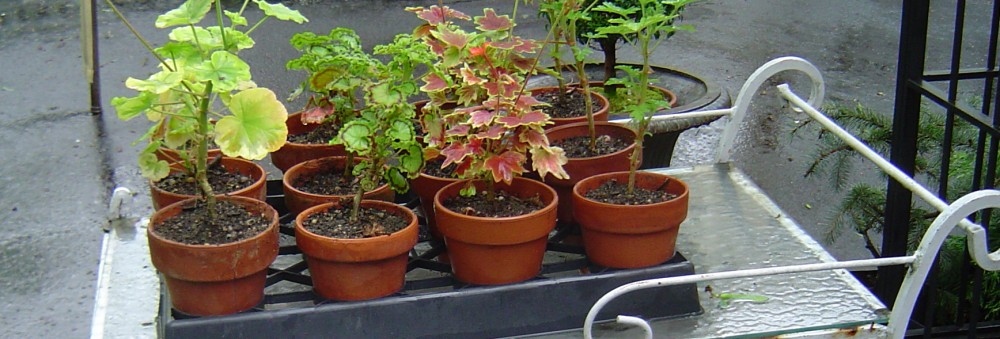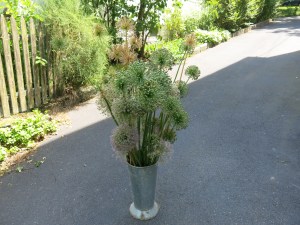Nothing much appears to be happening in the garden right now. All the spring drama has subsided and the summer madness is yet to happen. It is quiet. Given the unusual weather patterns this year, there is a sense of being somewhat out of sync. Things are not normally this quiet in July but I’m not complaining. The lack of rain has been a bigger concern.
While we have not yet declared that we are experiencing a drought, it has been a challenge to keep the plants hydrated. Finding that sweet spot where I’m comfortable with how much watering I’m doing and the minimum it takes to keep the plants happy is critical to the general well being of both garden and gardener. It’s a very fine line.
This moment of horticultural hush is the perfect occasion to take in the soft elements in the garden. The details that get easily overlooked in the fanfare of other loud bloomers. Though these plants were selected deliberately, they perform mostly as supporting characters. While the overall play of colors and textures in a bed are appreciated, these ‘minor’ actors are seldom noted as relevant. Yet, they complement the main guys immeasurably.
Case in point – Sanguisorba tenuifolia Albiflora. I purchased this plant at a rare/unusual plant fair several years ago. Struck by their finely toothed pinnate foliage, I thought they would combine well with other tall, airy, spired and whorled plants. The white, catkin-like fingers of flowers at the tips of slender stems. wave gracefully in the wind. Softened by fluffy stamens, these diminutive bottle-brush blooms are highly tactile. At night, they take on a ghostly glow.
The plant blends well in the naturalistic plantings and watching the individual flowers open top down is fascinating. Yet, if juxtaposed with brightly colored and/or large flowers like Asiatic lilies or hollyhocks, one would hardly see these pale, ethereal blooms.
This variety of Sanguisorba is Asian in origin. It was purchased long before I became conscious of planting mostly natives. As per my rule, non-natives are permitted to remain only if they are not invasive. What a relief that this charmer has not gone amok. It has grown bigger but not spread anywhere else. The foliage alone is striking and I’d miss it very much if it had proven to be a thug.
Without the attention grabbers, I’m at liberty to observe the routine machinations in the garden. The bees on the hydrangea. The birds splashing in the bird bath. The papery, pink mallow swaying in the breeze as though listening to music only it can hear.
I note the still young grapes growing bigger and then I become aware that the birds are keeping tabs on them too. The columbine seed pods are rattling – I can only imagine their seeds finding homes that will become apparent next spring. All of the columbines in my garden are essentially squatters. Yet, I love them so – they seem to know much better than I as to where they should grow.
The fans of blue-green Alchemilla leaves hold beads of rain that sparkle bright in the sun. An otherwise ordinary area suddenly gets its moment to be extraordinary. I wonder if thirsty butterflies ever stop here to get a drink.
It is these days of silent wonder that nurture the soul and set fire to the imagination. Savor them slowly.
(c) 2016 Shobha Vanchiswar
[do_widget “Blog Subscriptions (Jetpack)”]

























































































